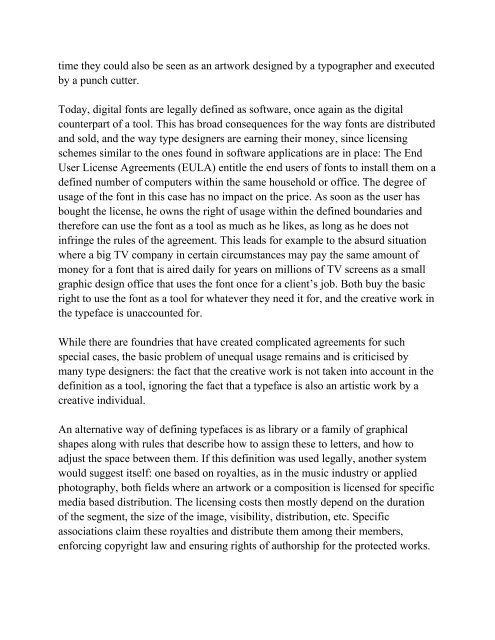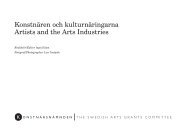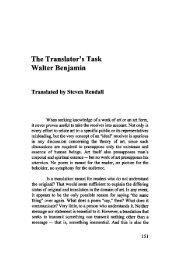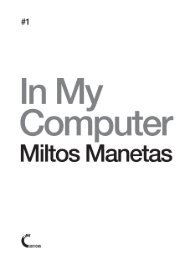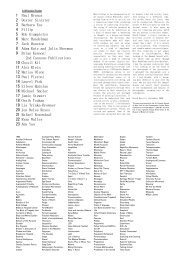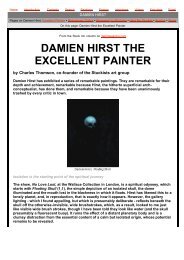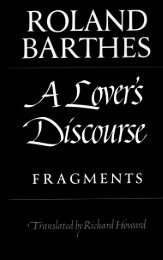Jürg Lehni – Typeface As Progamme - Harald Peter Ström
Jürg Lehni – Typeface As Progamme - Harald Peter Ström
Jürg Lehni – Typeface As Progamme - Harald Peter Ström
You also want an ePaper? Increase the reach of your titles
YUMPU automatically turns print PDFs into web optimized ePapers that Google loves.
time they could also be seen as an artwork designed by a typographer and executed<br />
by a punch cutter.<br />
Today, digital fonts are legally defined as software, once again as the digital<br />
counterpart of a tool. This has broad consequences for the way fonts are distributed<br />
and sold, and the way type designers are earning their money, since licensing<br />
schemes similar to the ones found in software applications are in place: The End<br />
User License Agreements (EULA) entitle the end users of fonts to install them on a<br />
defined number of computers within the same household or office. The degree of<br />
usage of the font in this case has no impact on the price. <strong>As</strong> soon as the user has<br />
bought the license, he owns the right of usage within the defined boundaries and<br />
therefore can use the font as a tool as much as he likes, as long as he does not<br />
infringe the rules of the agreement. This leads for example to the absurd situation<br />
where a big TV company in certain circumstances may pay the same amount of<br />
money for a font that is aired daily for years on millions of TV screens as a small<br />
graphic design office that uses the font once for a client’s job. Both buy the basic<br />
right to use the font as a tool for whatever they need it for, and the creative work in<br />
the typeface is unaccounted for.<br />
While there are foundries that have created complicated agreements for such<br />
special cases, the basic problem of unequal usage remains and is criticised by<br />
many type designers: the fact that the creative work is not taken into account in the<br />
definition as a tool, ignoring the fact that a typeface is also an artistic work by a<br />
creative individual.<br />
An alternative way of defining typefaces is as library or a family of graphical<br />
shapes along with rules that describe how to assign these to letters, and how to<br />
adjust the space between them. If this definition was used legally, another system<br />
would suggest itself: one based on royalties, as in the music industry or applied<br />
photography, both fields where an artwork or a composition is licensed for specific<br />
media based distribution. The licensing costs then mostly depend on the duration<br />
of the segment, the size of the image, visibility, distribution, etc. Specific<br />
associations claim these royalties and distribute them among their members,<br />
enforcing copyright law and ensuring rights of authorship for the protected works.


